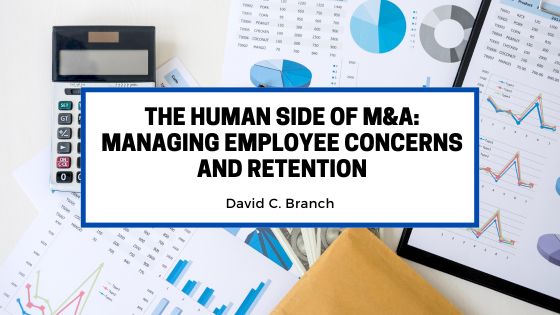Mergers and acquisitions (M&A) are not just about combining financial assets and business operations; they also involve integrating people and managing the human aspects of change. Employees are often profoundly affected by M&A transactions, experiencing uncertainty, anxiety, and fear about their jobs, roles, and future. Effectively managing employee concerns and retention is essential for ensuring a smooth transition and maximizing the success of M&A deals. In this blog post, we’ll explore the human side of M&A and discuss strategies for addressing employee concerns and retaining key talent.
Communication and Transparency
Effective communication is critical during change, especially in M&A transactions where uncertainty and speculation can lead to employee anxiety. Companies should strive to maintain open, transparent, and frequent communication with employees throughout the M&A process. This includes providing updates on the transaction status, sharing relevant information about the rationale behind the deal, and addressing employee concerns and questions openly and honestly.
Transparent communication helps build employee trust and confidence, alleviating fears about the future and fostering a sense of inclusion and involvement. Leaders should be visible, accessible, and empathetic, actively listening to employee feedback and concerns and providing support and reassurance as needed.
Cultural Integration and Alignment
M&A transactions often involve bringing together employees from different organizational cultures, backgrounds, and working methods. Ensuring a smooth cultural integration and alignment is essential for fostering collaboration, teamwork, and synergy within the combined organization.
Companies should invest in cultural assessments to understand the cultural dynamics of both organizations and identify areas of alignment and potential conflict. Leaders should proactively address cultural differences, promote shared values and behaviors, and create opportunities for employees to connect, collaborate, and build relationships across teams and departments.
Cultural integration efforts should extend beyond the initial transition period to create a unified organizational culture that reflects the combined entity’s values, vision, and mission. This may involve revisiting policies, practices, and processes to ensure they are aligned with the desired culture and reinforcing cultural norms through leadership behaviors and communication.
Talent Retention Strategies
Employee turnover is a common concern during M&A transactions, as employees may feel uncertain about their future within the organization and explore opportunities elsewhere. Retaining key talent is essential for preserving institutional knowledge, maintaining business continuity, and maximizing the value of the combined organization.
To retain top talent, companies should implement proactive talent retention strategies tailored to employees’ needs and preferences. These strategies may include providing career development opportunities, offering competitive compensation and benefits packages, recognizing and rewarding performance, and creating a supportive and inclusive work environment.
Companies should also prioritize the retention of critical employees who possess unique skills, knowledge, and expertise that are essential for the combined organization’s success. Identifying key talent early in the M&A process and engaging them in discussions about their roles, career aspirations, and concerns can help mitigate the risk of talent loss and ensure a smooth transition.
Employee Well-being and Support
M&A transactions can be emotionally taxing for employees, leading to stress, anxiety, and burnout. Companies should prioritize employee well-being and provide support resources to help employees navigate change challenges.
This may include offering employee assistance programs, access to counseling services, and flexible work arrangements to accommodate personal and family needs. Leaders should encourage open dialogue about mental health and well-being, destigmatize seeking support, and provide resources and guidance for managing stress and coping with change.
Creating a supportive work environment where employees feel valued, respected, and cared for can foster resilience, engagement, and commitment during uncertainty and change.
Conclusion
Managing the human side of M&A is essential for driving successful outcomes and maximizing the value of transactions. By prioritizing communication and transparency, fostering cultural integration and alignment, implementing talent retention strategies, and supporting employee well-being, companies can mitigate the risks of employee turnover, maintain morale and productivity, and create a positive and inclusive work environment conducive to growth and success. Effective management of employee concerns and retention is critical for the success of M&A deals and for building trust, loyalty, and resilience within the organization for the long term.

